Proper Motorcycle Lane Positioning

More than just riding between the lines
Being smaller than the majority of road users is both an advantage and disadvantage of riding a motorcycle. However, many riders don’t give much active consideration to how they can apply a motorcycle’s advantages to help mitigate its disadvantages. Thanks to lane positioning options afforded by a bike’s small size, we can take proactive steps to keep those big, lumbering cars from becoming overly intimate with us.
The width of cars pretty much limits them to one place within a lane. If their driver can just keep it between the lines, they’re golden. Motorcycles, thanks to their being narrow, single-track vehicles, have a seemingly infinite number of slices within a lane that they can occupy. However, for the sake of simplicity, we’ll divide the lane into thirds: left, right and center. Think of these as lanes within the lane. Your choice of position within the lane can do two important things.
First, by creating a protective bubble of space around you (a “space cushion” in MSF parlance), you can give yourself more time to react should an inattentive car driver start claiming more than his fair share of the road. If you are traveling in the left lane overtaking a car on your right, you will be less vulnerable if you ride in the left third of the lane when passing through the car’s blind spot. Similarly, if a car is overtaking you, move to the third of the lane opposite that vehicle.
The second benefit of lane positioning is that you can make yourself more visible to other traffic. If you’re following a car, stay in the center third so that your headlight can’t be missed in a car’s rear view mirror. Do the same when traveling in front of a car, too – but remember that a tail light doesn’t capture a driver’s attention as well as your high beam. When overtaking a car on its left, you can combine space cushioning with lane placement for better visibility.
As you approach the car, make sure you are in the right third of your lane, keeping your headlight in the car’s side mirror. Just before you enter the car’s blind spot, move to the left third of the lane and immediately move back to the right third once you are safely past the car. This keeps you as far as possible from the car when the driver can’t see you, but inserts your motorcycle back into their field of vision as you move in front of them. Your movement from the left to the right third of the lane should also attract the driver’s attention, pointing out that there’s someone new in front of them. As you navigate through traffic, you will constantly need to adjust your lane position to maximize your space cushion and visibility.
Unfortunately, traffic situations don’t always occur in ways that allow you to deal with them individually, as you could in the previous examples. Sometimes, if you pause for a moment, they will naturally separate in the flow of traffic, but in most cases, you’ll have to take what you’re given. In these instances, address the issues simultaneously.
If cars are both on the left and the right of your intended path of travel, choosing either side of the lane would compromise your space cushion with one of the vehicles. So, you’ll need to split the difference to get the most separation possible from both by passing them in the middle third of the lane. While this is not an ideal situation with either car, it does give you the best option for this scenario.
Make a game out of plotting the route you’d take while observing traffic – even if you’re not riding at the time. After all, isn’t having to constantly interact with your surroundings in an intellectually active way one of the attractions of riding? If you just wanted to sit on your ass traveling from point A to B, you’d be in a car…talking on a cell phone.
Finally, many riders neglect to consider the message they are sending to drivers with their lane position. The sad truth is that, as fewer people use their turn signals, drivers are being forced to make assumptions based on limited information about what the other road users are going to do.
So, consider the signals you send to other road users through your actions within your lane. For example, how you would appear to an oncoming car when you ride in the left third of the left lane as you both approach an intersection? Your lane position could be misinterpreted as preparing to turn left, which could prompt the other driver to initiate his turn right in front of you. Instead, shift to the right third of your lane as you approach the intersection.
Could your shift to the right third of the lane be sending a different message when it occurs on a two-lane road rather than a four-lane one? Moving to the center of your lane on a two lane road would not give you as much of a space cushion, but there is less of a chance that your move will be interpreted as preparing to turn right than if you’d moved all the way over to the right third.
Either way, by moving away from the other car, you’ve increased your space cushion and clearly stated that you have no intention of turning left. Another benefit is that by switching positions, you’ve caused your headlight to waver, drawing the distracted driver’s attention to you.
As with any other riding skill, the more you use it, the more natural it becomes, so practice on every ride. Gradually, your choices of lane positioning will become intuitive, leaving you to use more of your concentration analyzing the traffic ahead of you – or just having fun with the wind in your face.

Like most of the best happenings in his life, Evans stumbled into his motojournalism career. While on his way to a planned life in academia, he applied for a job at a motorcycle magazine, thinking he’d get the opportunity to write some freelance articles. Instead, he was offered a full-time job in which he discovered he could actually get paid to ride other people’s motorcycles – and he’s never looked back. Over the 25 years he’s been in the motorcycle industry, Evans has written two books, 101 Sportbike Performance Projects and How to Modify Your Metric Cruiser, and has ridden just about every production motorcycle manufactured. Evans has a deep love of motorcycles and believes they are a force for good in the world.
More by Evans Brasfield




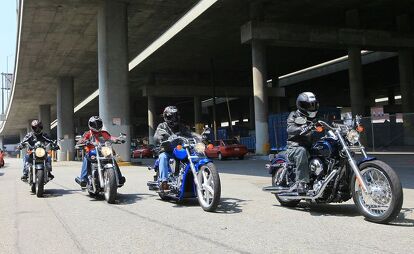




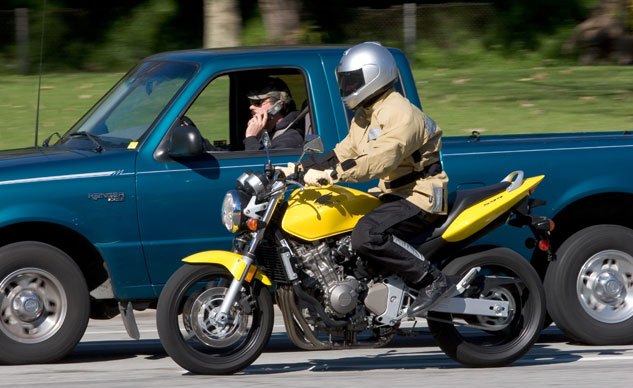










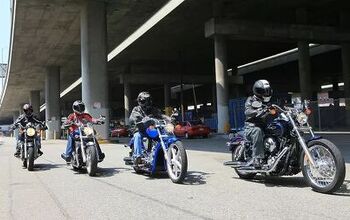

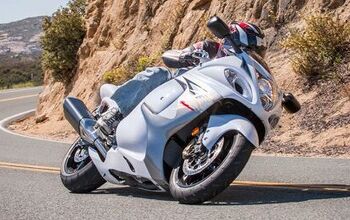

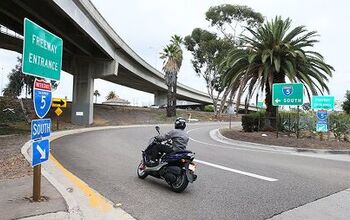












Comments
Join the conversation
You only need to remember one thing. When you get onto a MC, you are INVISABLE!
All good points, but I have a slightly different take. Maybe riding in Florida makes me want to keep the airflow up and avoid stopping for red lights, but I tend to avoid the right lane for the lane(s) away from the merging and slowing for turns. Likewise, I avoid the far left lane where left turns are an option unless an adequate deceleration zone is available. Riding in one of the center lanes is preferable, but only if vision is adequate and no crazies are nearby.
Most cagers adjust their outside rear-view mirrors so that they can see the side of their vehicles. That is wrong! We all know what the side of our vehicles look like. What we should want to see is the vehicle in the adjacent lane. The mirrors should be adjusted farther outward to alleviate the blind spot between the widest viewpoint rearward to the periphery of forward vision. Turning one's head to view the blind spot before changing lanes is only an option to some people and that is where we should NEVER ride! Riding on the opposite side of the adjacent lane to a vehicle in their blind spot will make you a wet spot regardless of how loud and noticeable you think your bike is.
Approaching an area where an adjacent lane of vehicles is slowing is a reason to crowd that lane. It would not be a good idea to slow down because of the traffic behind you so the best approach is one of maximum visibility. Crowding the lane puts us in the rear-view mirror of everyone in that lane who are now anxious to invade our lane. Moving away from that lane (space cushion) is only inviting the invaders to jump out in front of us. I much prefer that they stay in their lane until after I pass.
One thing that has not been mentioned is our greatest new threat of texting and dialing while driving. Although distracted driving has always been illegal, many states are now adopting laws that specify texting as an illegal activity for the driver. That alone won't stop it. We all must be aware of the danger of being run over because the driver behind failed to see us as we slow or stop. For that reason, I rarely, if ever, slow or stop in the center of a lane. If the cager following me realizes that he's about to hit me at the last second, maybe giving him a space to avoid contact will save my life (it already has once).
In the same regard, stopping in the center of a lane is unacceptably risky too. Not only do you risk slipping in the oily residue of cages upon stopping or starting, you leave no easy escape path for distracted drivers and their sliding vehicles to avoid hitting you. A third advantage to stopping at the edge of a lane is that you can jump in between the stopped cars to escape being hit from behind. Whew!
Our main objective to staying safe is to remain visible at all times. ALWAYS USE YOUR HIGH BEAM HEADLIGHT DURING DAYTIME RIDING! The high beam is rarely used at night because of oncoming traffic, so why not use it to make yourself as threatening as possible during the day? Modern low beams are designed to reduce glare for oncoming drivers so the light is barely visible at all during the daylight. Projection headlights are even less visible with their minuscule lenses. However, the high beams are designed to project a wide, bright light that floods the entire forward path. Some automakers simply use the high beams as daytime running lights and we should too.